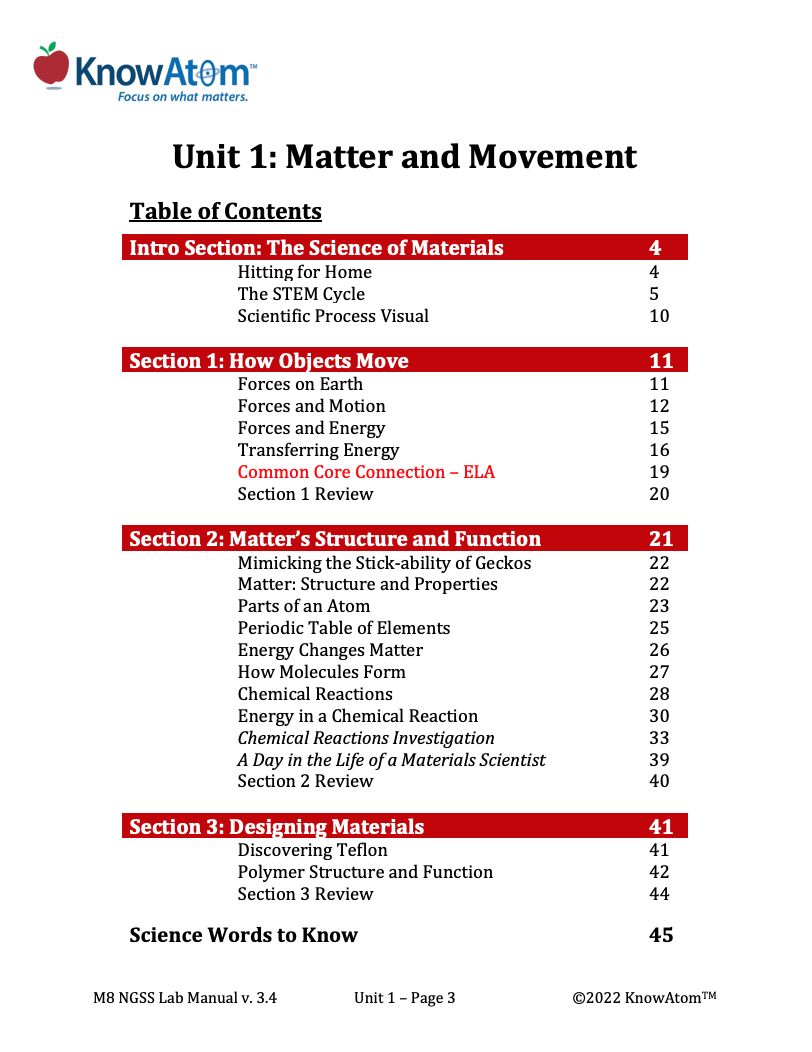
In this unit, students explore the relationship between matter and energy using the phenomenon of material properties to discover why certain materials are useful for a particular function. For this lesson, they focus on the role of energy in changing matter during a chemical reaction phenomena between two substances. This page is a high-level extract of this lesson.
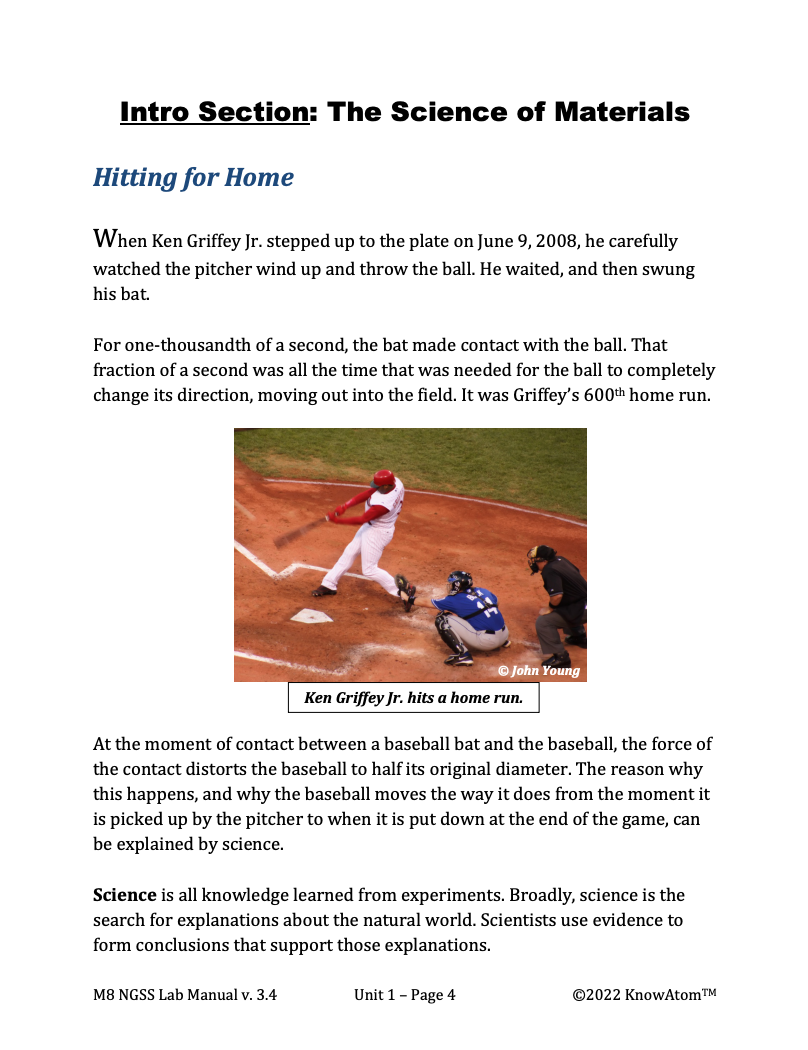
In this unit, students use the phenomenon of why certain materials (such as the materials that make up a baseball) are useful for a particular function to explore the relationship between matter and energy phenomena. In this lesson students manipulate the properties of a polymer bouncy ball by changing the amounts of reactants in a chemical reaction. This page highlights parts of this lesson.
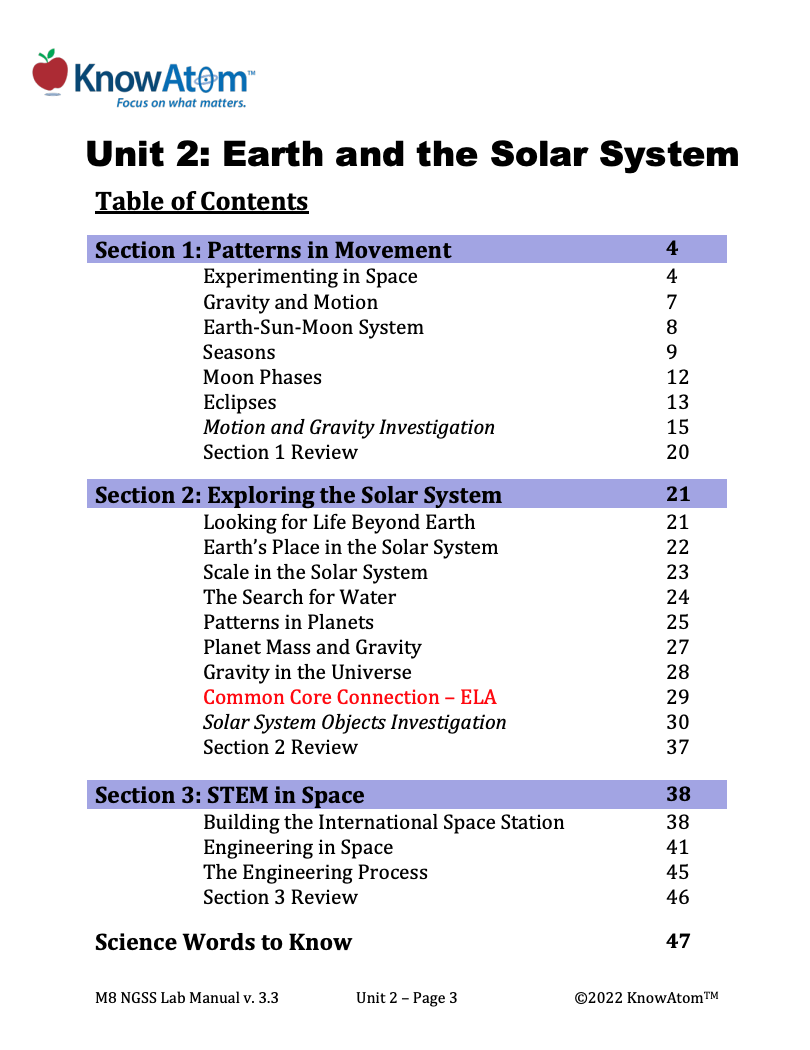
In this unit, students explore the vastness and mysteriousness of the universe, exploring how the Earth-sun-moon system fits into solar system phenomena and the Milky Way Galaxy. In this lesson they evaluate phenomena related to gravity’s role in forming the solar system and how mass and gravity determine weight on other planets. This page showcases key elements in this lesson.
.png)
In this unit, students explore science phenomena of the life forms that live on Earth, analyzing the cellular structures that make up complex organisms and figuring out how different groups of cells work together to keep the organism functioning properly. This page shows extracts from each part of this lesson.
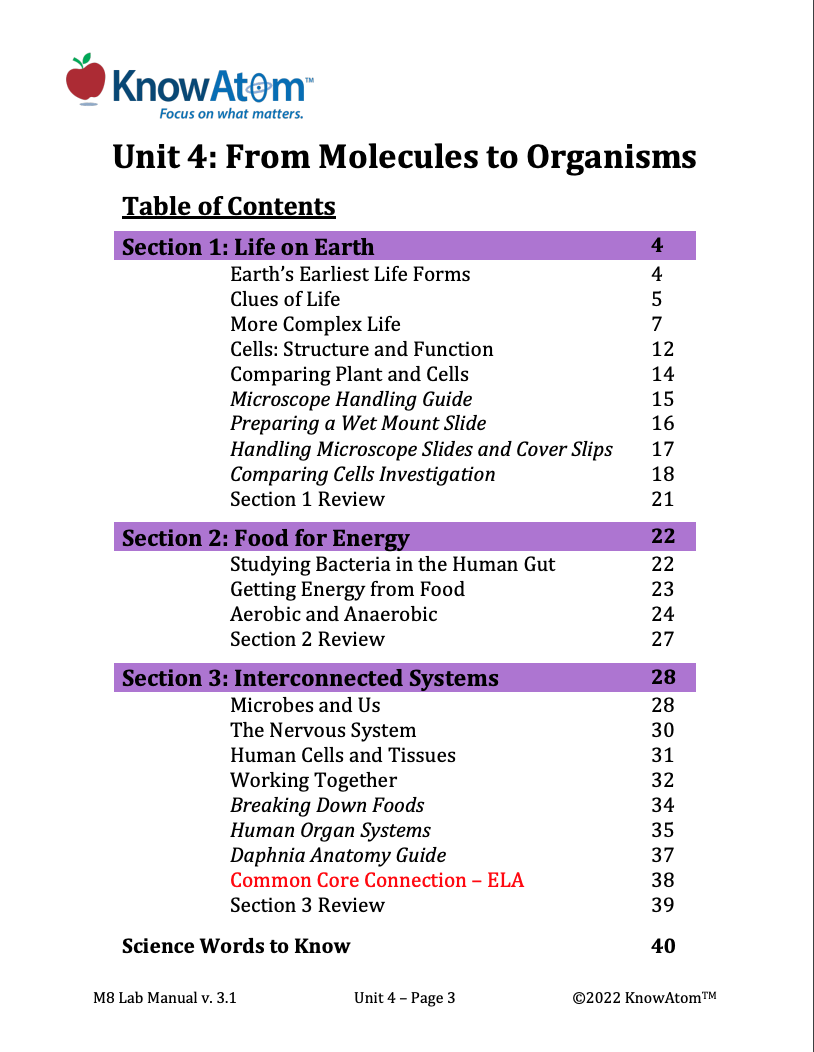
In this unit, students compare the science phenomena of bacterial, plant, and animal cells, figuring out similarities among them all as well as differences. Students then conduct an experiment into how yeast cells extract energy from food molecules. This page highlights components of this lesson.
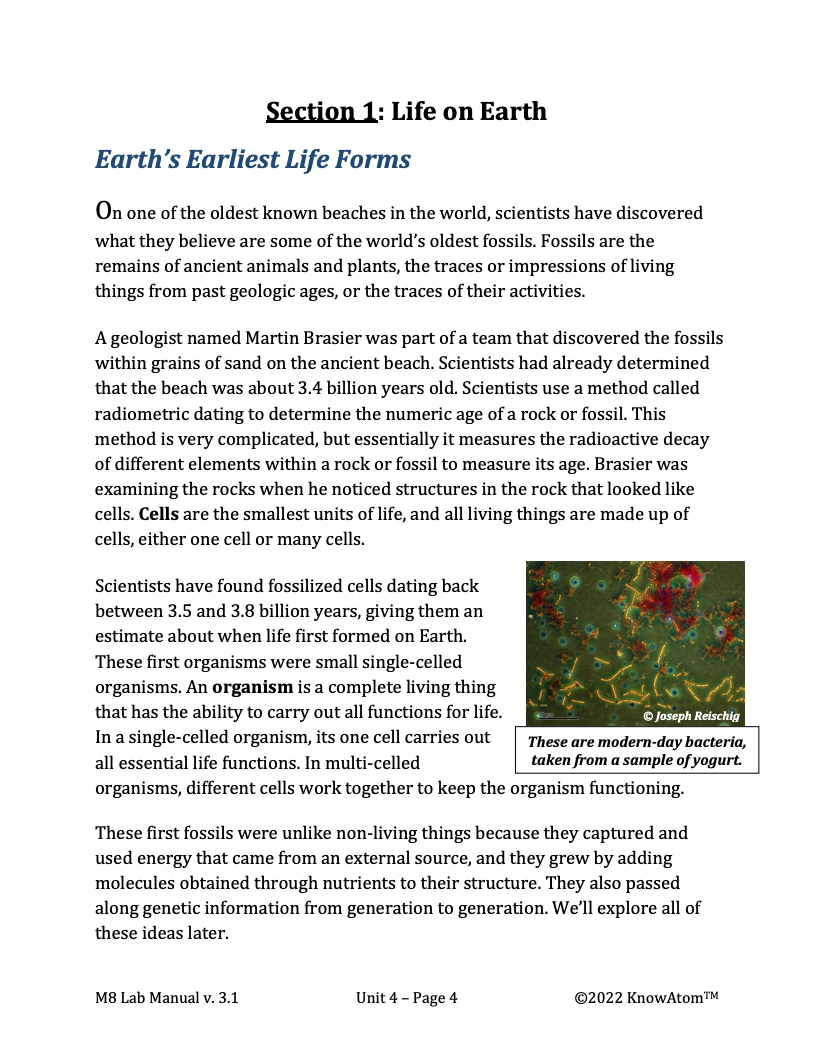
In this unit, students explore science phenomena related to life forms that live on Earth, analyzing the cellular structures that make up complex organisms and how different groups of cells work together to keep the organism functioning properly. In this lesson, students test the effect of sucrose concentration on the heart rate of daphnia, observing how different organ systems work together. This page provides a high-level extract of this lesson.
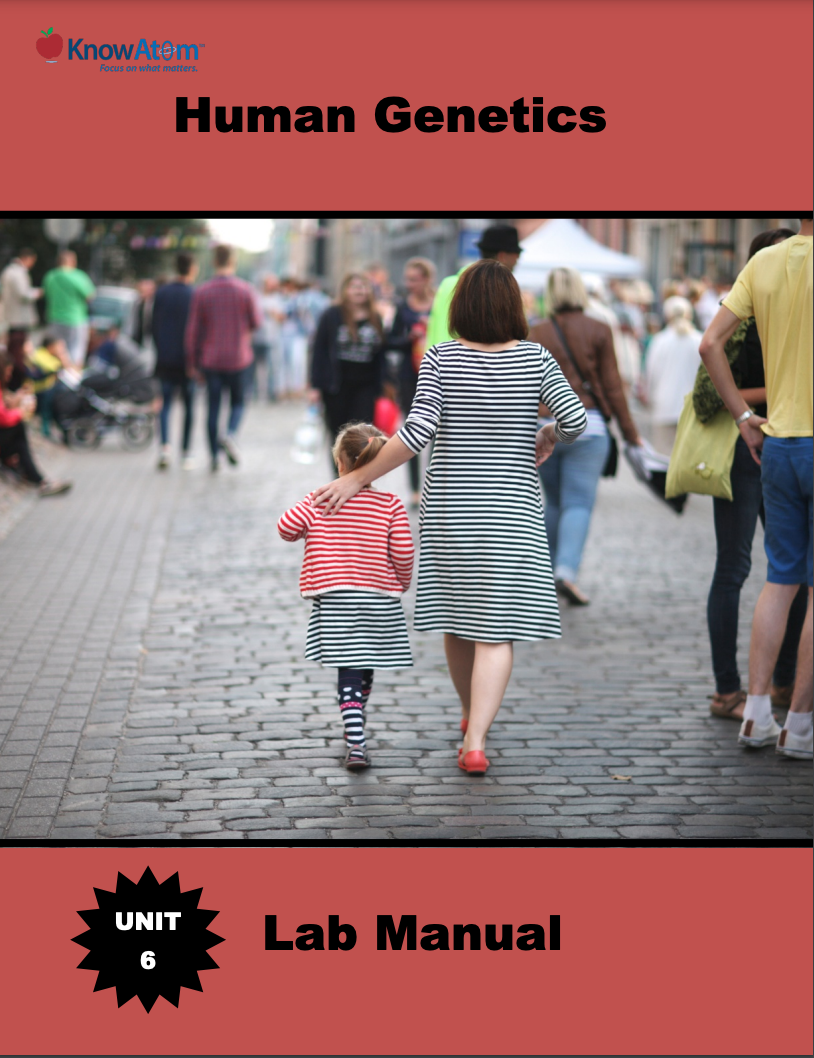
In this unit, students figure out connections between genes and heredity to evolution, focusing on figuring out the phenomena of how both genetic information and the environment influence how a population develops over time. Students investigate different kinds of evidence for life’s shared ancestry and then experiment with how adaptations help some organisms survive. Students end with an investigation into artificial selection.
.png)
In this unit, students focus on the phenomena of Earth’s ice as they model how glaciers shape Earth’s surface. In this lesson, they investigate how scientists use ice cores to reconstruct Earth’s past climates and environments. This page is a high-level extract of this lesson.
.png)
In this unit, students focus on phenomena related to Earth’s ice as they model how glaciers shape Earth’s surface, and investigate how scientists use ice cores to reconstruct Earth’s past climates and environments. In this lesson, students analyze how scientists can use the science phenomena of fossils in rock layers as evidence for past changes on Earth. This page showcases all the components of this lesson.
.png)
In this unit, students focus on the organisms that live on Earth’s surface, analyzing the science phenomena of how all living things are made of cells, which have certain requirements for survival, including food, water, and energy. They explore the phenomena of structure and function by analyzing the role of the cell membrane in maintaining a balanced amount of water in the cell. This page highlights excerpts from a few sections of this lesson.
.png)
In this unit, students focus on the relationship between an organism’s cellular structure and the ability of the organism to access energy to carry out essential life functions. Students begin by examining prokaryotic and eukaryotic cells under the microscope and then compare organelles in plant and animal cells in this lesson. This page is a high-level extract of this lesson.
.png)
In this unit, students discover how life reproduces at the cellular level, analyzing the science phenomena of how genetic information is stored in chromosomes. In this lesson, students observe mitosis in plants and animals. This page shows key components of this lesson.
.png)
In this unit, students explore the interconnectedness of the living and nonliving parts of an ecosystem phenomena. In this lesson, they design an experiment to test how heat is transferred in different materials found on the rocky shore. This page provides a brief overview of this lesson.
Standards citation: NGSS Lead States. 2013. Next Generation Science Standards: For States, By States. Washington, DC: The National Academies Press. Neither WestEd nor the lead states and partners that developed the Next Generation Science Standards were involved in the production of this product, and do not endorse it.
